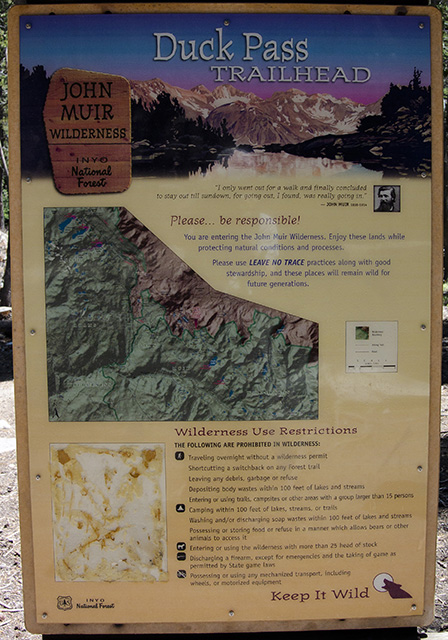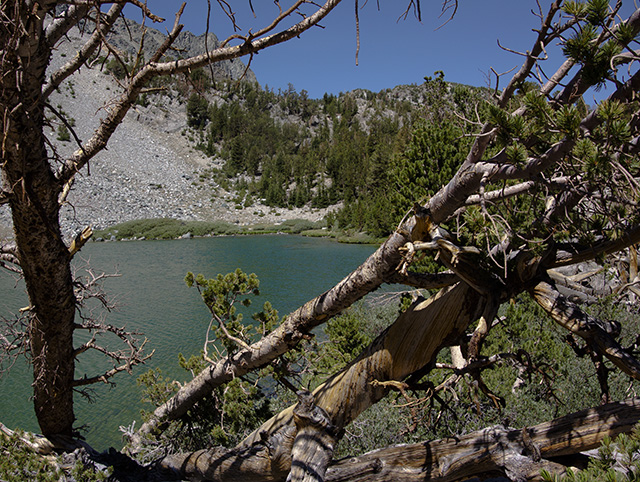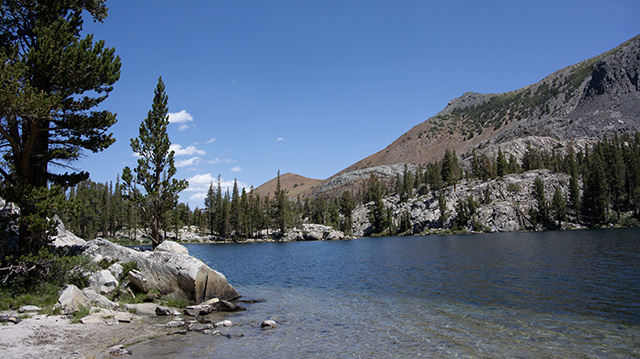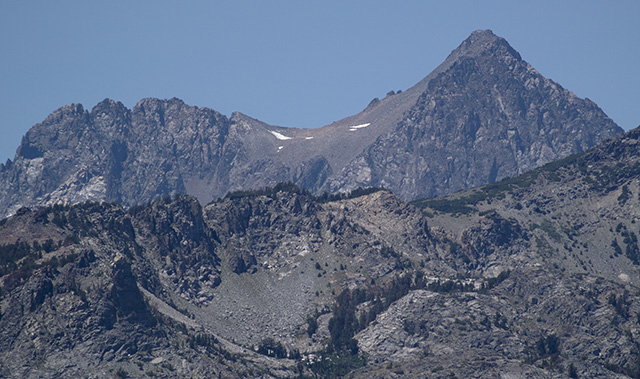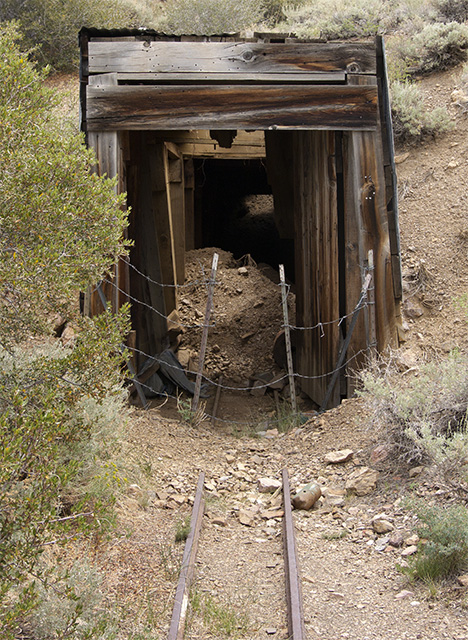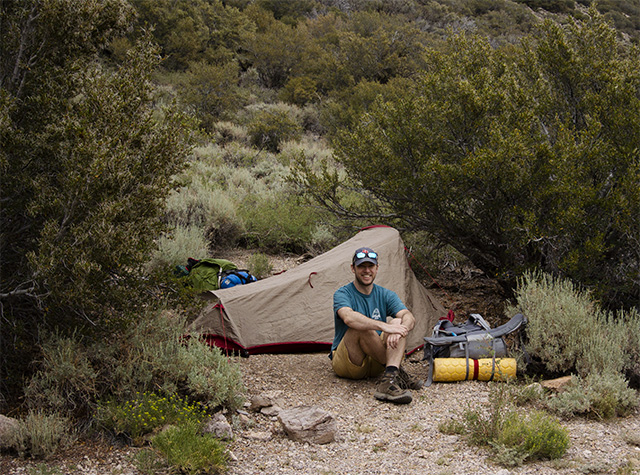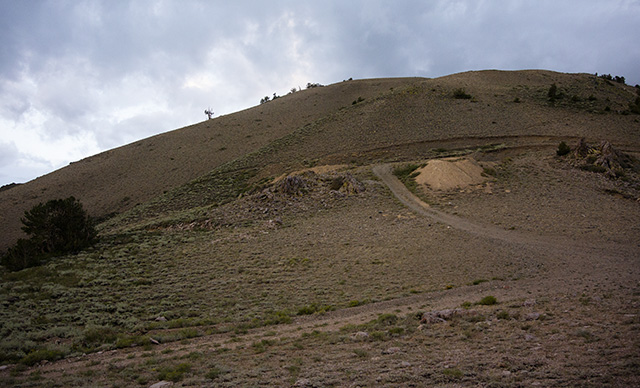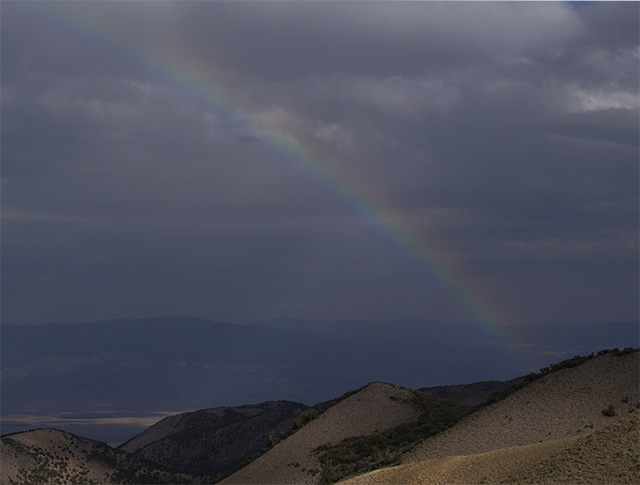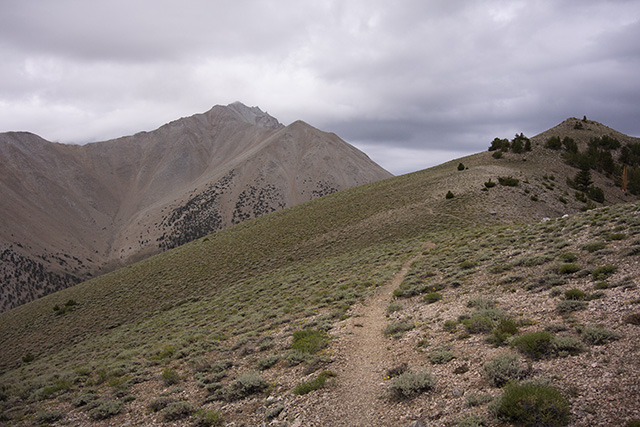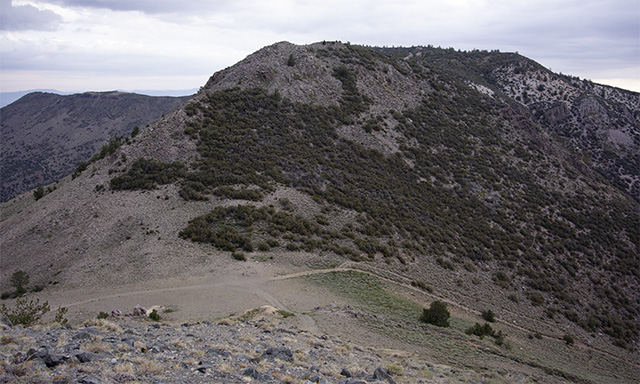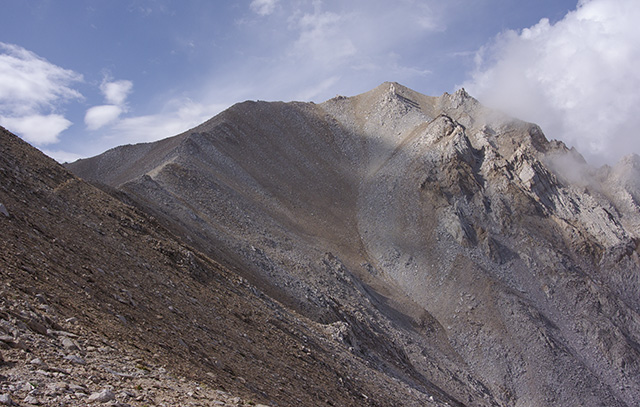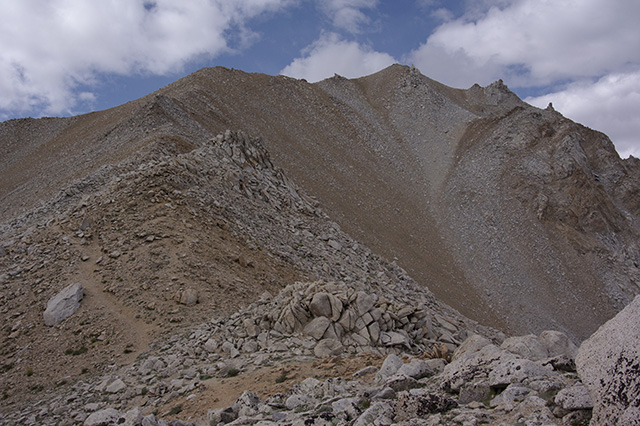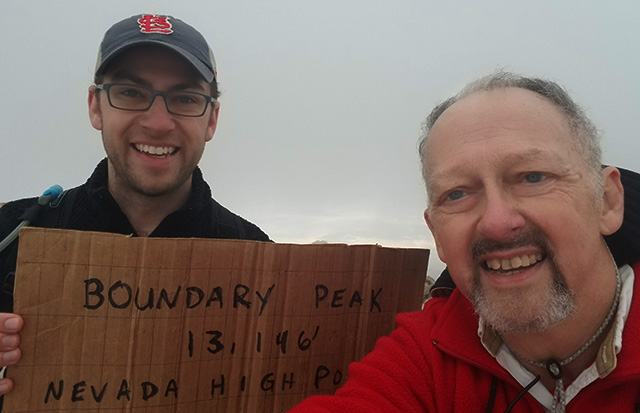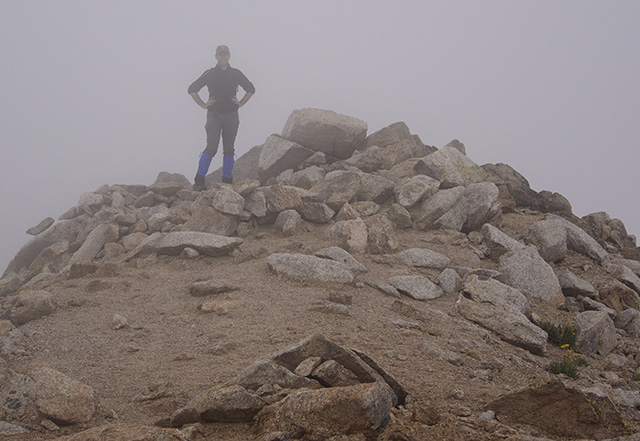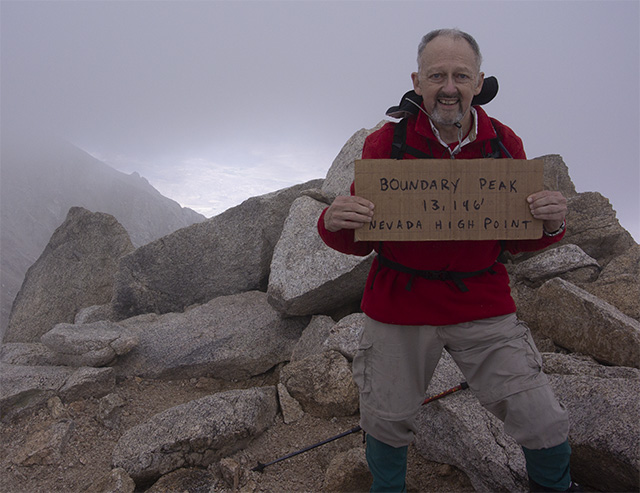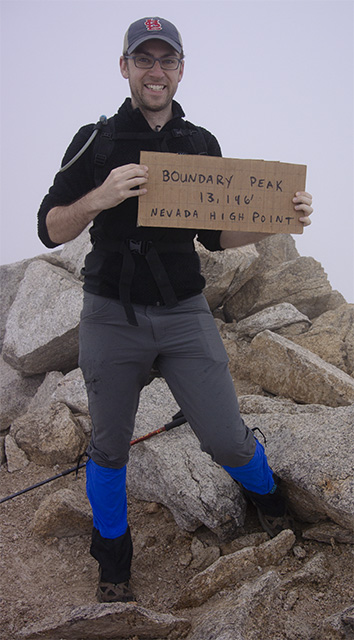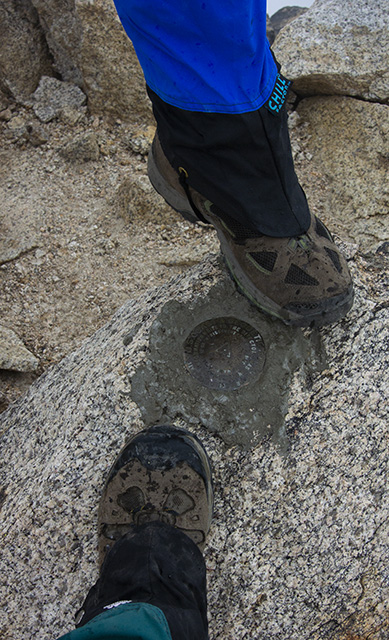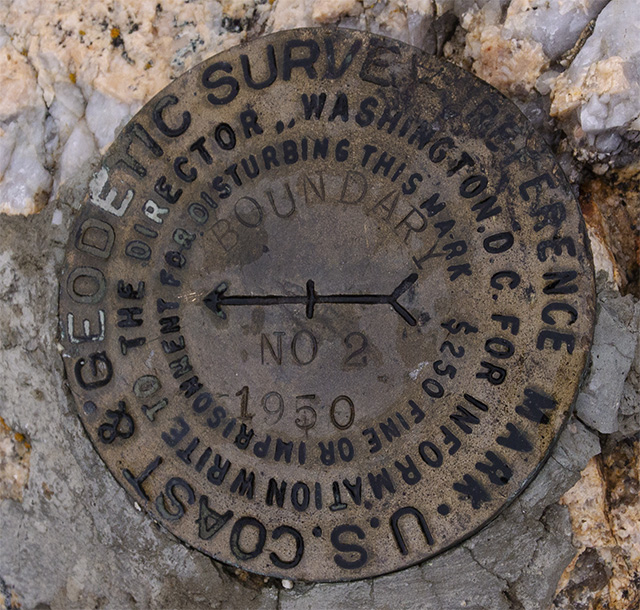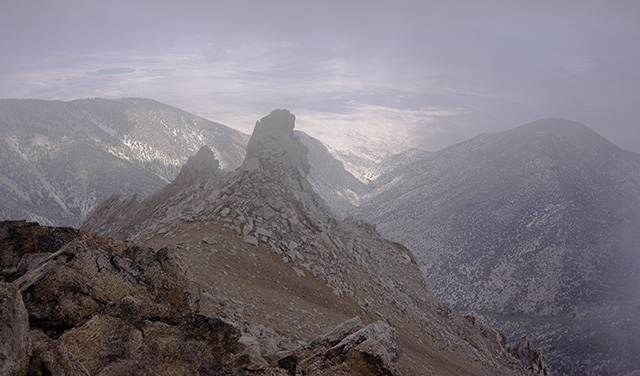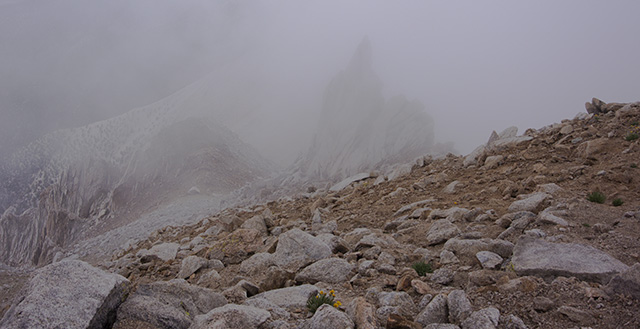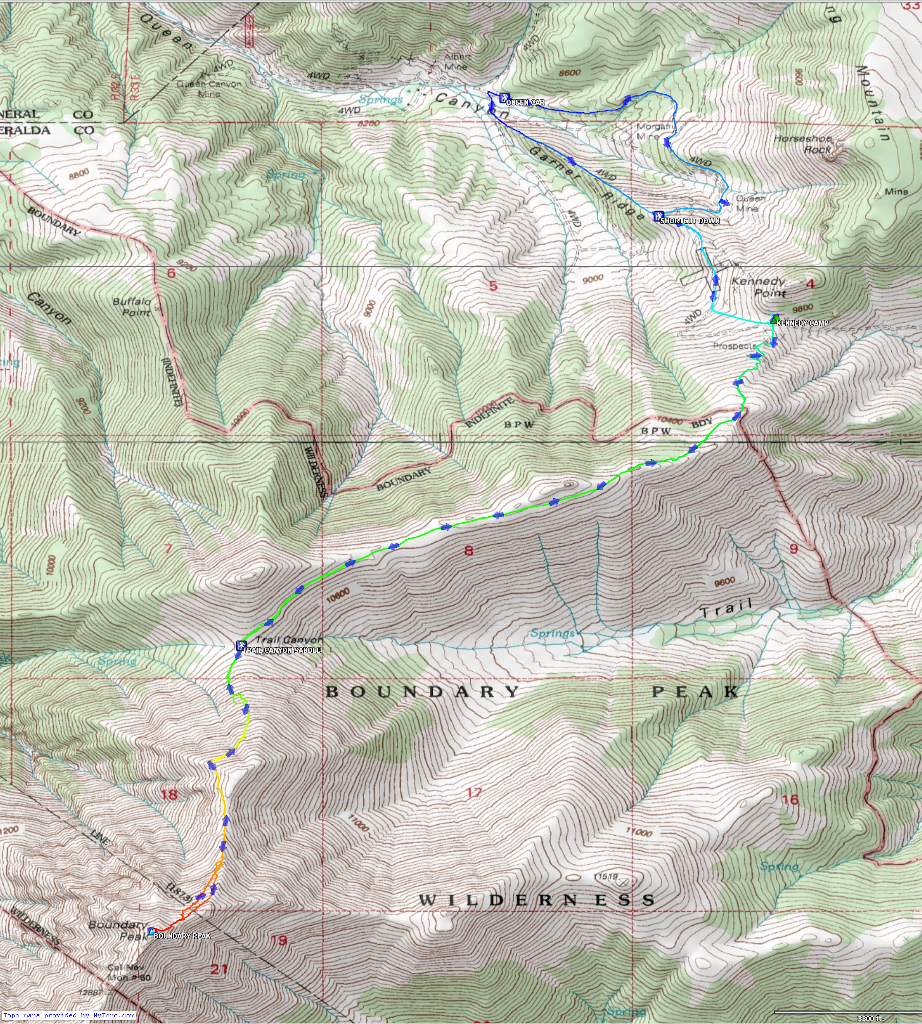|
Finishing the Lower 48
|
|
Tuesday - Friday, July 13 - 16, 2021 |
|
Saturday, July 17, 2021 |
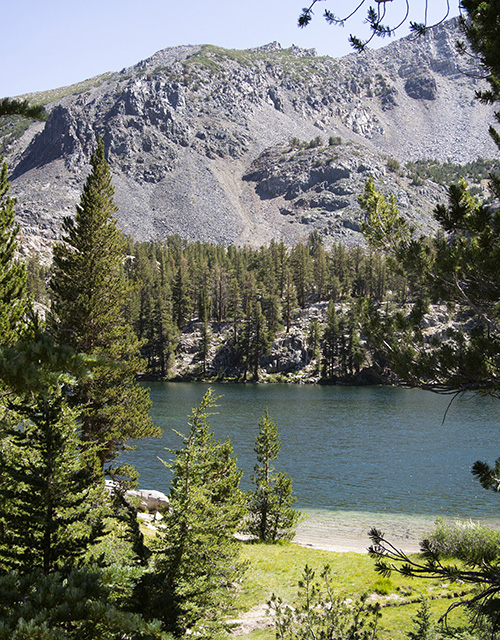
Skelton Lake |
For a look at our warmup hike, here is the GPX track overlaid on the topographic map. Note that this map has elevations in metric, not English units. Beach on Skelton Lake |
|
Sunday, July 18, 2021 |
|
Knowing we had a short hike up to our planned camp at the Kennedy Point saddle,
we slept in a bit and enjoyed a leisurely breakfast. We rearranged things in
the car to hide everything under the cover between the rear seat and hatch. We
drove across the Benton Crossing Road to pick up Highway 6 into Nevada. Turning
right onto the Queen Canyon Road, we headed up toward our destination for the night.
The road has not seen much, if any, maintenance in the past 20 years and after the
first half-mile or so, is washed out and rutted. The willows a bit farther up were
not as overgrown as in the past and it was easy to avoid scratching the paint with
only a few spots where biasing to one side to avoid the worst of the ruts caused
them to brush the side of the car.
We found a convenient turnout before the road deteriorated to the point that I
worried about clearance even with the Outback and parked the car for the day. We
enjoyed our lunch leftovers from the Yodler the day before, shouldered our packs
and headed up to Kennedy Point.
Hiking up to our camp, we passed several abandoned mines in various stages of
collapse. I noted the spot I had planned on parking but observed to Nathan
that the "road" between where we parked and that spot would have been iffy, at best,
to traverse with the Outback. Not to worry, we got an extra mile or so of exercise
in the process.
|
Abandoned Mine along the Queen Canyon Road |
|
Sheltered Campsite at Kennedy Point Saddle |
We arrived at the Kennedy Point saddle in due course. Up there, at about 9,800',
the wind was blowing across the saddle and we were happy for the brushy growth
providing some shelter for our campsite. We set up the tent and arranged things
for the night. A few brief showers blew through, just enough to make it worthwhile
to stay in the protection of the tent until dinnertime.
We prepared a freeze-dried dinner and scouted the trail up the adjoining ridge that
we would follow the next morning. As the sun set, we were treated to a brief rainbow
across the valley to the east of Kennedy Point.
|
|
Monday, July 19, 2021 |
|
With no one else in sight, we shared summit photo duties to document our success at reaching
Nevada's highest point. We looked around the summit area and found a benchmark plus another
reference mark. There isn't a sign, save the handwritten cardboard one someone thoughtfully
left in the ammo box with the summit log book.
Alan Finishes the Lower 48 atop Boundary Peak
|
Nathan Improves his Highpoint Total to 42 atop Boundary Peak |
|
Summit Benchmark with Boots |
The summit benchmark is pretty worn and hard to read, so we just took a photo with our boots for reference. You noticed that we wore gaiters? They're highly recommended if you want to keep the gravel out of your boots on Boundary Peak. It was worth the extra few ounces each that we carried in order not to have to stop and empty our boots of scree. The nearby reference mark is in better condition. Reference Mark in the Summit Area |
|
View from the Summit into the Valley and Highway 6 |
A couple more summit view shots and it was time to head back to camp. Thundershowers were forecast for the afternoon and we felt fortunate that the weather had held this well so far. View from the Summit back along the Ridge |
|
Having successfully reached the summit of Boundary Peak, it was time to head back to camp.
I've often said that "the summit is only halfway" and Boundary Peak was about to demonstrate
that in spades. Not long after leaving the summit and well before we reached any semblance
of a trail, I hit a patch of ball-bearing scree on a flat rock. I spun, tucked and fell onto
my back on top of my summit pack. Something hard in the pack ended up between my back and the
rock. Ouch. Since both Nathan and I have been trained in wilderness first aid over the years,
we did a careful inventory. No damage to limbs. That's good. A little scrape on one knuckle
from the rock. That'll heal. But...where I landed on my back, I could tell I had cracked a rib.
No difficulty breathing but moving my right arm caused significant pain in my ribcage. Nathan
asked if he needed to call in help (we did have some cell coverage at that spot), but I declined.
As long as I was careful not to move my right side too much, I could walk without much discomfort.
Having cracked a rib in a skiing incident several decades ago, I was pretty sure of the general
extent of my injury and wasn't worried about walking back to camp and then to the car.
As we headed down, we began to hear thunder out in the valley to our left. Fortunately, it was
a good distance away and the clouds were moving away from us, so we continued down from the peak.
We took a break at the Trail Canyon saddle. From there, the quality of the trail improved significantly
so we made more or less decent time back to camp. As we arrived, the rain began and shortly became
quite heavy. I wasn't of much use at that point, so Nathan had to break camp and pack things into
our two main packs. We were both glad our campsite was well below the ridgeline as there were
lightning strikes on both ridges above us as Nathan packed up camp.
When we first started our backpacking and highpointing escapades, I ended up carrying most of the
weight and Nathan had a small pack suited to his stature of the era. He has now officially paid
that back, with interest, as he carried his pack down to the car on the first trip, then made the
five-mile round-trip to camp and back to the car to carry the rest of our gear down. I knew I had
raised a useful pack horse for a reason!
When we got back to Mammoth Lakes, a visit to the ER there confirmed the field diagnosis (and then some).
I had broken not one, but two, ribs. No wonder it hurt. The ER physician said they'd usually have kept
me overnight for observation but since I was with Nathan, she trusted him to monitor me and get me back to
the ER if anything changed for the worse. She also insisted that I come back for follow-up x-rays in
the morning to verify that the breaks had not dislocated and I wasn't at risk of pneumothorax. A pizza,
a couple of beers and 3 Ibuprofen later, I tried (with mixed success) to sleep.
The second set of x-rays showed both breaks well aligned so the ER physician said it was ok to head for
home. Nathan offered to drive back with me instead of flying from Reno back to Chicago and I took him
up on his offer. Mt. Ritter and my tour of Arches and Canyonlands in Utah will have to wait for another trip.
The trip home was uneventful, although we had to detour through the southern part of Colorado due to
mudslides on I-70 and construction on U.S. Highway 50.
|
|
References |
|
The map below is an overview of our route up Boundary Peak. A larger copy of that map plus
a zoomed-out view showing the Queen Canyon Road in from U.S. Highway 6 and another of our warmup hike
outside of Mammoth Lakes are also available here. I've included links to the GPX track and waypoint
files, as well. Those won't display nicely in a browser, so just use the links to download the
files either for your GPS or to load into your favorite GPX mapping software.
I've used Topofusion software to generate these maps.
The free version is ok to play with but obscures pieces of the map. The full version isn't
terribly expensive and seems to work quite well with the track and waypoint data out of my
Garmin Oregon 450 GPS.
|
|
Respectfully submitted by
Alan Ritter, August, 2021 |

